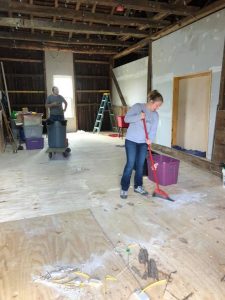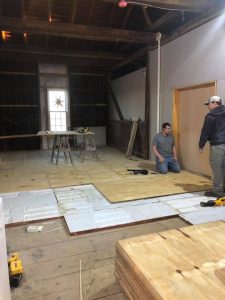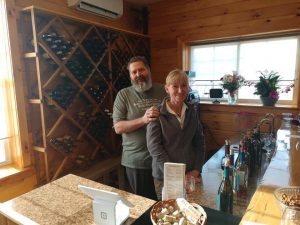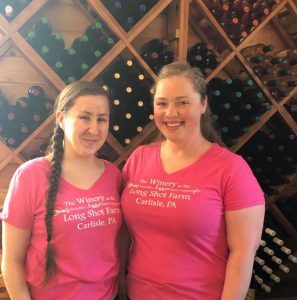Duff and I have been tasked with writing descriptions for the first 10 wines that are available at the Winery. It took us a few weeks as we wanted to savor each bottle as we wrote about it. We first sampled the wine a few times and independently wrote down what flavors we tasted and smelled. We were careful not to say anything till we both had written something down. It was helpful for me at this point to just reference a huge list of flavors, good and bad (from strawberries to buttered popcorn), commonly (or sometimes uncommonly) found in wine. We also made use of a taster’s reference kit, which had purified samples of all sorts of awesome and awful smells. After we combined our tasting notes, we then enjoyed a fresh glass of wine while we came up with the wine descriptions below.
Fletched
Fletching refers collectively to the vanes attached to the end of an arrow. Traditionally, three such fin-shaped feathers made the arrow fly straight and true, if attached by a skilled fletcher. This wine is crafted from a blend of three fruits. Like the fletching, Chambourcin, Blackberry, and Vidal come together to create a sweet wine with an accent of fresh cherries and black raspberry.
Bow and arrow
Chambourcin and Blackberry, which is the bow, which is the arrow? One builds the foundation with a dark dried cherry profile, the other enlivens the wine with a shot of summer jam. A dangerous combination.
Concord
A straight forward wine with that classic grape flavor. This is the grown-up’s grape juice, but now with a sophisticated fruity bouquet.
Chambourcin
Dried cherries, dark berries, need we say more? A deep ruby wine with a soft and supple mouth feel.
Chambourcin Rosé
We have removed the cherry to expose a floral bouquet and a strawberry palate. When chilled, enjoy the mineral overtones with a hint of sweet.
Vidal Blanc
With a clean crisp acidity, slightly chilled this wine puts forth a peachy semi-sweet palate, with hints of melon.
Chardonel
Like the debutant at her own ball exhibiting her virtue, this is a crisp off-dry wine, showcasing a pure white grape profile with a lemon finish.
Valley Blush
This blend of Chambourcin Rosé and Vidal acts as the cousin to the Rosé, the one you want to spend the reunion with. Drier, lively, a bit of a lemony acidic bite, but with the strawberry flavors still coming through.
Winter Blend
You spend all season out in the woods with your bow and arrow, have nothing to show for it, and coming in from the cold, something good needs to happen. Winter blend gives you a sweet ripe cherry and apples wine that when warmed, will not improve your shot, but may make you not worry about it anymore.
BlackBerry
Slightly sweet with notes of jam and balanced acidity. This is a summer fruit reduced to its essence, to be enjoyed all year round.
Posted by Anja Weyant



 Cork is a sustainably harvested product that is natural, renewable and recyclable. Cork forests support high levels of biodiversity and prevent desertification in the Mediterranean region , where most of these forests are found. Additionally, cork oak trees store carbon in order to regenerate their bark. According to WWF, a harvested cork oak tree absorbs up to five times more carbon than one that is not, and cork forests absorb millions of tons of CO2 each year. With a global decline in the natural cork use for wine, cork trees are being lost and countries are experiencing desertification, which also threatens the habitats of some critically endangered species, like the Iberian Lynx in Portugal.
Cork is a sustainably harvested product that is natural, renewable and recyclable. Cork forests support high levels of biodiversity and prevent desertification in the Mediterranean region , where most of these forests are found. Additionally, cork oak trees store carbon in order to regenerate their bark. According to WWF, a harvested cork oak tree absorbs up to five times more carbon than one that is not, and cork forests absorb millions of tons of CO2 each year. With a global decline in the natural cork use for wine, cork trees are being lost and countries are experiencing desertification, which also threatens the habitats of some critically endangered species, like the Iberian Lynx in Portugal.





